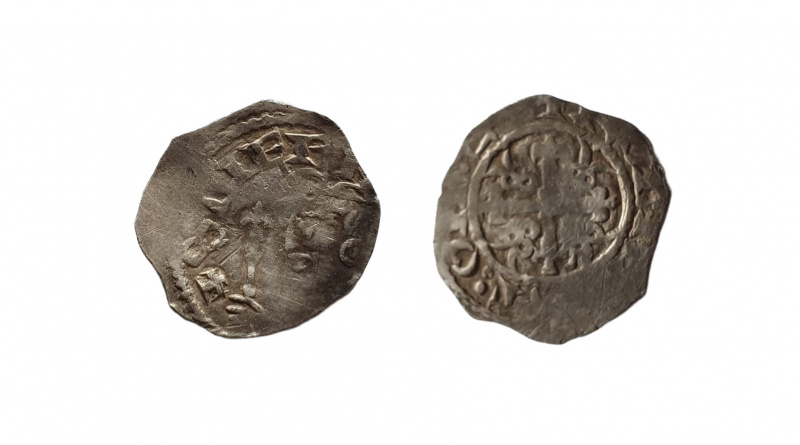Stephen, penny
I don’t see many Norman pennies as detecting finds. This is mainly due to the fact that during the Norman period most coins were in the possession of the upper class. Coin finds increase after the start of the Plantagenet period, when a monetary economy started to develop across the whole of society.
Stephen Palmer must be luckier than most detectorists as he managed to unearth a penny of the last Norman king: Stephen. The coin is an example of the rare cross and piles type. On the obverse is a bust of Stephen with a sceptre in front. On the reverse is a cross fleury with a pile and a trefoil in each angle.
The legend on the reverse is very difficult to make out and all I can offer is a strong possibility of the reading. It appears to start with +R and the last letter of the moneyer’s name is T. Therefore, the most likely moneyer is RODBERT. The copulative – ON – is just visible and the first letter of the mint signature looks like a letter L. Leading on from this, the moneyer could be Rodbert and the mint London.
Valuation
The obverse has been struck off centre and is weak in places but +STIEF is clear. The reverse is centrally struck but weak or flat in places. The condition could be better but I’ve seen far worse pennies of Stephen than this one. And, examples of the cross and piles type turn up far less frequently than those of the Watford type. However, I can’t be absolutely certain about the mint and moneyer. If I was cataloguing this coin for sale at auction I would set the pre-sale estimate at £400 – £500 and would expect the hammer price to be within that range.
Coin Valuation Service
Have your coin or artefact valued using my free online coin valuation service

